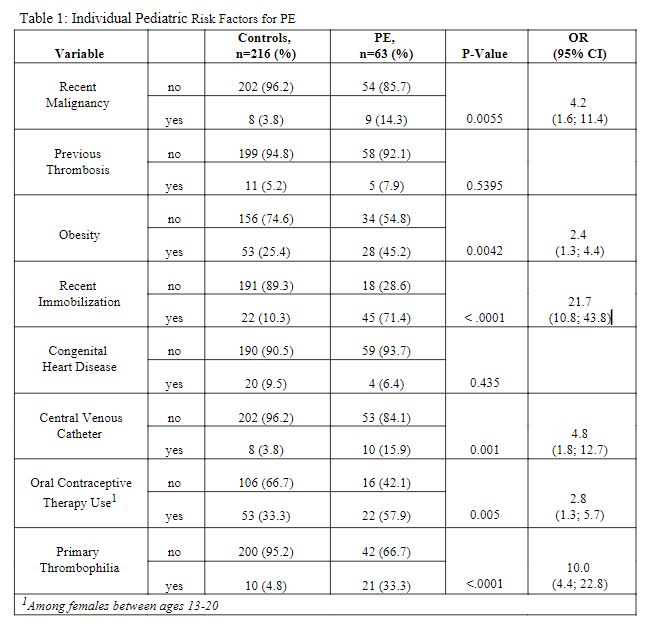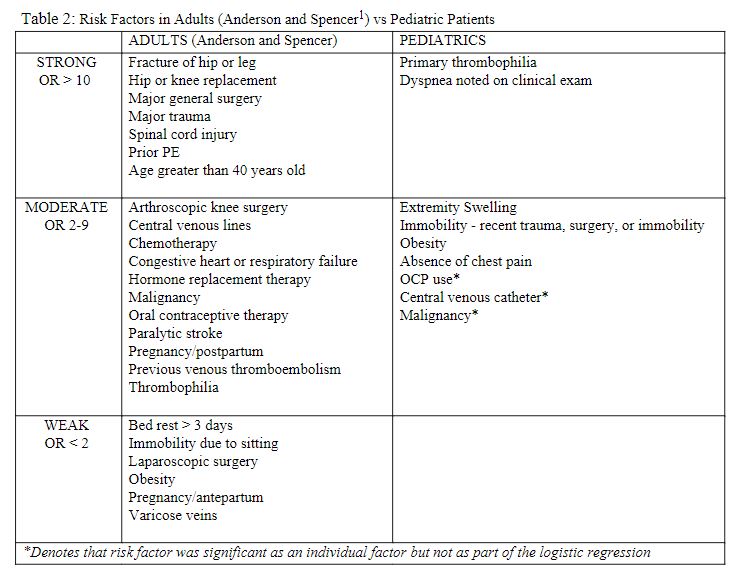Hematology/Oncology 2: Pediatric Hematology
Session: Hematology/Oncology 2: Pediatric Hematology
118 - Variation in Pulmonary Embolism Risk Factors in Pediatric Patients at a Single Center Compared to Previous Adult VTE Risk Factor Studies
Saturday, April 26, 2025
2:30pm - 4:45pm HST
Publication Number: 118.7097
Mikala Daskalakis, Akron Children's Hospital, Akron, OH, United States; Margaret Massett, Akron Children's Hospital, Akron, OH, United States; Osama El-Assal, Akron Children's Hospital, Akron, OH, United States; Miraides Brown, Akron Children's Hospital, Akron, OH, United States

Mikala Daskalakis, DO (she/her/hers)
Pediatric Resident
Akron Children's Hospital
Akron, Ohio, United States
Presenting Author(s)
Background: Pulmonary embolism (PE) is a rare but serious diagnosis in pediatric patients, yet very limited research exists on risk factors and diagnosis in children. Assuming equivalent risks, clinicians often extrapolate adult PE risk factors to approach PE diagnosis and workup in children.
Objective: In this study, we evaluated the risk factors for PE in pediatric patients and compared those findings with the established risk factors in adults as reported by Anderson and Spencer (1).
Design/Methods: This is a retrospective study of patients who underwent PE rule-out at a tertiary care pediatric hospital between 2012 and 2021. Subjects under the age of 21 years old who had a CT pulmonary angiogram (CTPA) for PE rule-out were included and designated as either case or control patients based on their CTPA results. Group comparisons were performed using Student’s t-test, Wilcoxon Rank Sum test, Chi-square test or Fisher’s exact test as appropriate. Odds Ratios (OR) and corresponding 95% confidence intervals were calculated. Logistic regression was performed to identify independent risk factors associated with PE in children. All tests were two-sided and p < 0.05 was considered statistically significant.
Results: A total of 279 subjects were included in our study (PE, n=63 and control, n=216). Individual pediatric PE risk factors identified by bivariate analysis are listed in Table 1. Logistic regression was used to identify independent risk factors which were subsequently divided into strong (OR>10), moderate (OR 2-9), and weak (OR < 2). Independent PE risk factors in our pediatric sample included dyspnea noted by the clinician (OR: 23.2, 95% CI: 7.0;76.5), primary thrombophilia (OR: 17.4, 95% CI: 5.7;52.9), immobility (OR: 4.1, 95% CI: 1.4;12.2), unilateral extremity swelling (OR: 4.1, 95% CI: 1.4; 12.1), obesity (OR: 3.1, 95% CI: 1.3; 7.4), and absence of chest pain (OR: 3.5, 95% CI: 1.4; 8.8). Independent pediatric PE risk factors were then compared with the adult PE risk factors from Anderson and Spencer’s study (Table 2).
Conclusion(s): The most significant risk factors for pediatric PE diagnosis were dyspnea noted on examination and primary thrombophilia. There is variation between adult and pediatric PE risk factors and further studies are needed to validate our findings in a larger pediatric patient sample.
1. Anderson FA Jr, Spencer FA. Risk factors for venous thromboembolism. Circulation. 2003;107(23 Suppl 1):I9-I16. doi:10.1161/01.CIR.0000078469.07362.E6
Table 1: Individual Pediatric Risk Factors for PE

Table 2: Risk Factors in Adults (Anderson and Spencer) vs Pediatric Patients


